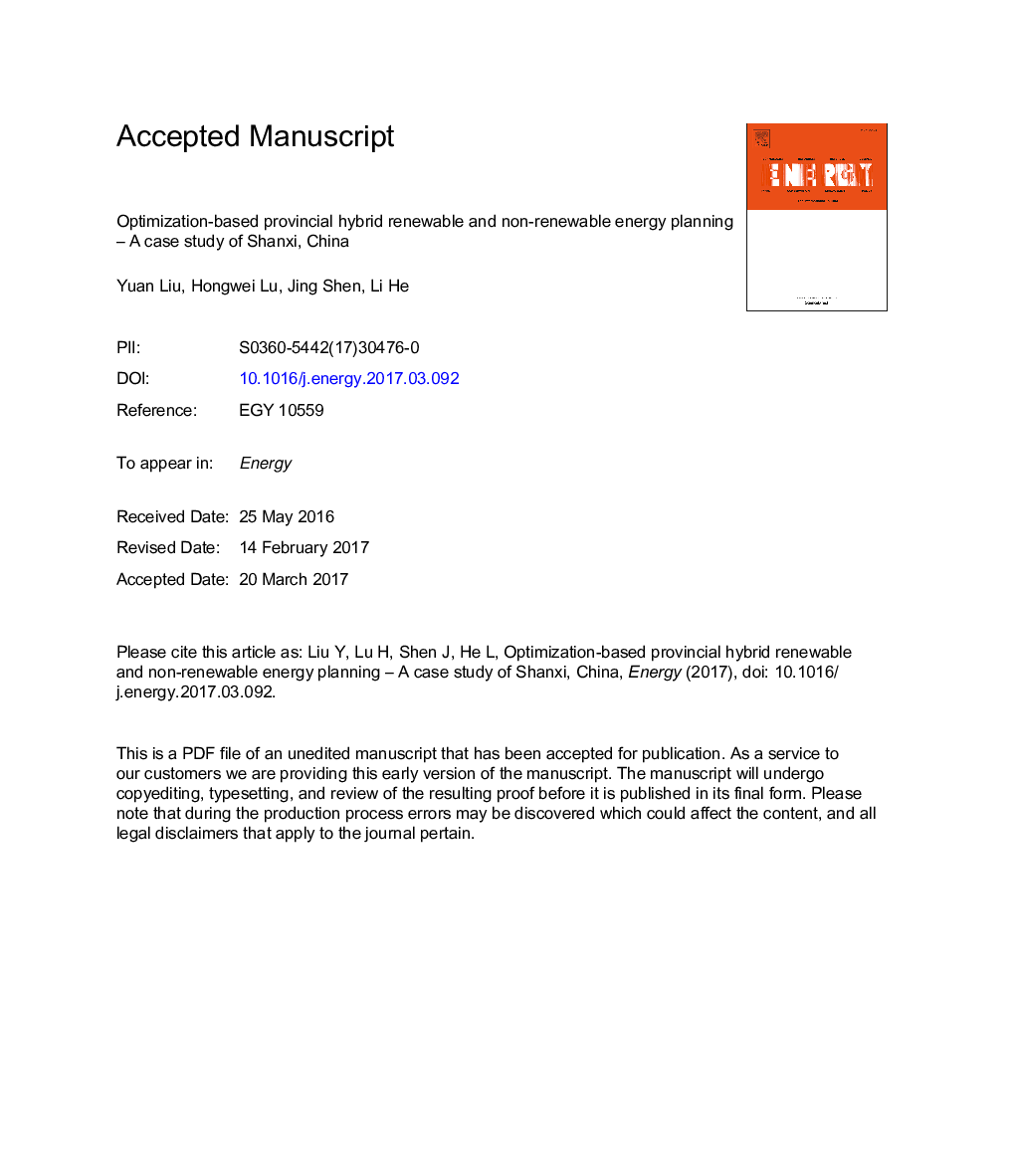| Article ID | Journal | Published Year | Pages | File Type |
|---|---|---|---|---|
| 5476072 | Energy | 2017 | 47 Pages |
Abstract
Energy planning is crucial to regional sustainable development, it contributes to dealing with electricity demand and supply effectively and tackling air-pollution control in a long-term view. However, the planning is complicated with various factor interrelationships and uncertainties. In this paper, an inexact Bi-level optimization method based on provincial scale hybrid renewable and non-renewable energy planning is developed. This method incorporates Analytic Hierarchy Process based on induced ordered weighted averaging operator and demand side management policies (IOWA-AHP-DSM), interval linear programming (ILP), and bi-level programming method (BLP) into electric power system (EPS) to optimize energy planning and air pollution control. A case study with both environmental and economic objects in Shanxi Province, China, are involved to demonstrate the availability of this method. Seven renewable energy proportion scenarios (0%, 5%, 10%, 15%, 20%, 25% and 30%) are set in this study. Results show that as the proportion increases, the amount of power generation and capacity expansion from natural gas and renewable energy resources increases, while the amount of power from coal and oil, the pollutants emissions and the trading volume of SO2 decreases. According to the satisfaction degrees of these solutions, results show that it meets both goals when the proportion is 20%.
Keywords
Related Topics
Physical Sciences and Engineering
Energy
Energy (General)
Authors
Yuan Liu, Li He, Jing Shen,
